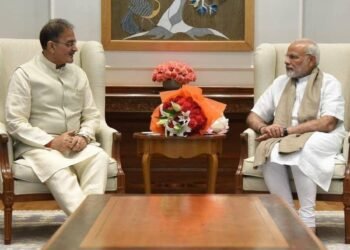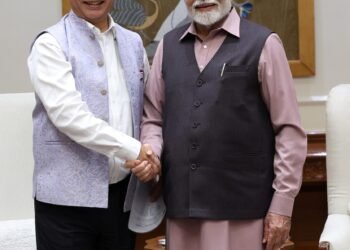India stated on Thursday that discussions were ongoing with U.S. officials regarding a “mutually beneficial, multi-sectoral bilateral trade agreement”, shortly after President Donald Trump declared a 27 percent reciprocal tariff on India.
In an official announcement, the Ministry of Commerce and Industry remarked, “The US President signed an Executive Order on Reciprocal Tariffs that enforces extra ad-valorem duties between 10% and 50% on imports from every trading partner.”
“The baseline duty of 10% will be effective from April 05, 2025 and the remaining country specific additional ad-valorem duty will be effective from April 09, 2025. The additional duty on India as per the Annex I of the Executive Order is 27%,” the release read.
“The Department of Commerce is carefully examining the implications of the various measures / announcements made by the President of the USA. Keeping in view the vision of Viksit Bharat, the Department is engaged with all stakeholders, including Indian industry and exporters, taking feedback of their assessment of the tariffs and assessing the situation,” it stated.
“The Department is examining the possibilities that could emerge from this new shift in US trade policy.”
Consequently, dialogues are currently taking place between Indian and US trade representatives to swiftly finalize a mutually advantageous, multi-sectoral Bilateral Trade Agreement. The statement stated, “These address a broad spectrum of shared concerns, such as enhancing supply chain integration.”
Earlier today, a senior government official was cited by news agency PTI stating that the commerce ministry was examining the effects of the tariffs.
He likewise described the US tariffs on India as “a mixed bag and not an obstacle” for the nation.
The news agency PTI reported that the official stated the universal 10 percent tariffs will take effect on all imports into the US starting April 5, with the remaining 17 percent beginning April 10.
The US declared 27 percent reciprocal tariffs on India, citing that New Delhi applies high import taxes on American products, as the Donald Trump administration seeks to lower the nation’s trade deficit and enhance manufacturing.













